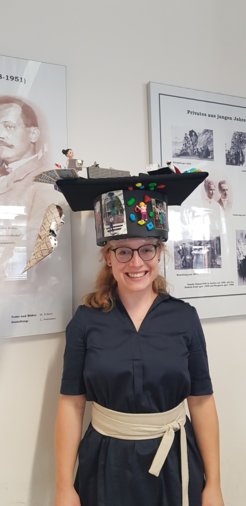Christina Hofer breaks records with her optimised method for measuring ultrashort light pulses
Christina Hofer, who first joined the MPQ as a working student, has completed her doctorate. She will continue her research as a postdoctoral student at the University of British Columbia. Congratulations!
In her PhD, Christina Hofer analysed a method for measuring ultrashort laser pulses in the mid-infrared range. Investigations and simulations on different laser systems enabled her to increase the detection efficiency by more than one order of magnitude compared to previous measurements. Ultrashort light pulses are a tool to improve our understanding of the molecular composition of blood samples and could help us to detect diseases at an earlier stage.

Ultrashort laser pulses in the infrared range are of particular interest for researchers because they excite the fundamental vibrational modes of molecules, which can then be analysed in more detail using absorption spectroscopy. In her doctoral thesis, Christina Hofer investigated a specific measurement method of ultrashort laser pulses, the so-called "electro-optical scanning": interaction between a mid-infrared wave and a shorter, time-delayed "scanning pulse" takes place via a non-linear optical process. So far, the method has been limited by the fact that non-linear processes are inherently inefficient if you want to measure many different wavelengths simultaneously.
Christina Hofer conducted simulations and investigations on various laser systems to improve our understanding and use of this non-linear interaction. The use of powerful scanning pulses with wavelengths close to the mid-infrared range eventually made the crucial difference: Christina Hofer was the first to demonstrate a broadband detection efficiency of mid-infrared photons up to the double-digit percentage range – an improvement of more than one order of magnitude compared to the previous records. With the optimised measurement method, analysing electric fields that vary in strength over many orders of magnitude is now possible. One example would be the molecules in a breath sample, which vary greatly in concentration and spectral coverage.
Christina Hofer takes away many positive memories from her time at the MPQ. "I was very excited about collaborating with great colleagues - both personally and profssionally," she says.
Since her PhD defence, Christina Hofer has been working at the Center for Molecular Fingerprinting at LMU and will take up a postdoctoral position at the University of British Columbia in Vancouver in the summer.
We congratulate her and wish her all the best and much success!












